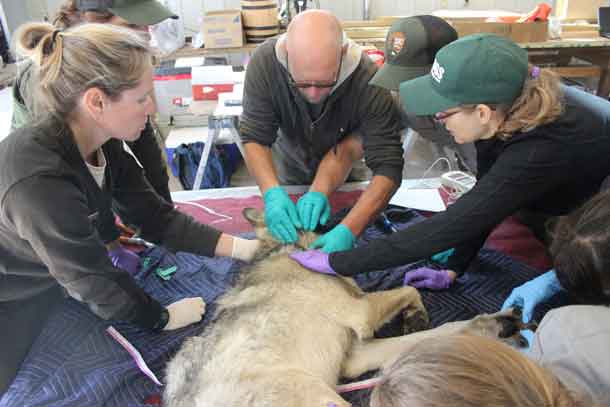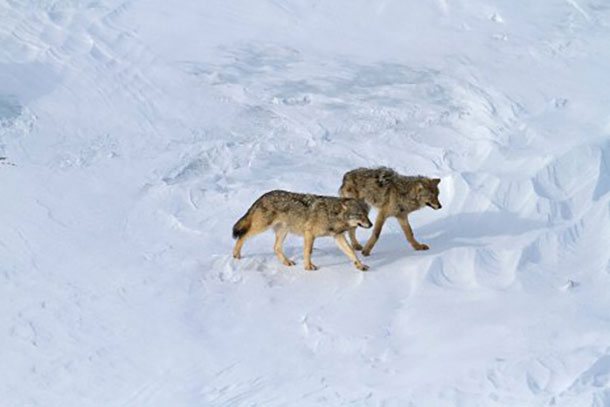
HOUGHTON, MICH – The National Park Service (NPS) has been monitoring the wolves that were captured in Minnesota earlier this fall and transported to Isle Royale as part of a multi-year project to restore predation in the remote park. Sixteen different wolves were captured on the Grand Portage Chippewa reservation. Seven of those wolves were collared and released either on Isle Royale or at the site of capture. Young wolves were ear tagged and released. Collaring and ear tagging contribute to the Grand Portage Band’s monitoring program. Ear tags have been invaluable in determining the age of wolves for the Isle Royale project and in population estimates on the mainland.
Four of the 16 wolves captured on the Grand Portage Reservation were transported to Isle Royale. The four wolves were examined by wildlife veterinarians, documented, tagged and fitted with tracking collars. The wolves selected for translocation to the park fit the requirements determined by wildlife professionals and established in the Environmental Impact Statement (EIS) signed by the NPS Regional Director in June 2018. They were deemed generally healthy, between the ages of two and five, and not from the same pack. Capture, health exams, translocation and release of wolves has been a team effort involving numerous agency and university personnel.
Since the wolves arrived on the island, park biologists have been tracking them using GPS technology, which allows daily monitoring of movement. The National Park Service confirmed today that one of the wolves relocated to the park this fall has died. Park staff became concerned when location data for the male wolf indicated a mortality signal, despite the fact that the collar was not functioning properly. The wolf’s collar malfunctioned from the onset of the project where it was sending a mortality signal even while game cameras provided photos of it and the collar tracked movements from the release site to the middle of the island and back.
Late last month, the collar indicated his movements appeared to be confined to a small location and the collar was in mortality mode. Because of the earlier malfunctions, park staff needed to determine whether the signal was truly a mortality signal. Isle Royale staff and partners from Grand Portage Band of Chippewa travelled to the island to find the wolf. They located it through telemetry and converged on the carcass to do a site investigation and recover it for necropsy. There was no obvious cause of death and no indication of the wolf on wolf mortality. The wolf is being transported to the US Geological Services wildlife health lab in Madison, Wisconsin, for necropsy. Results are expected in December.
The three remaining relocated wolves are doing well and their movements are being tracked through GPS. They have occasionally been within 700 feet of each other while exploring the island. The park is continuing with this project and is planning relocation of wolves from Ontario in January.

